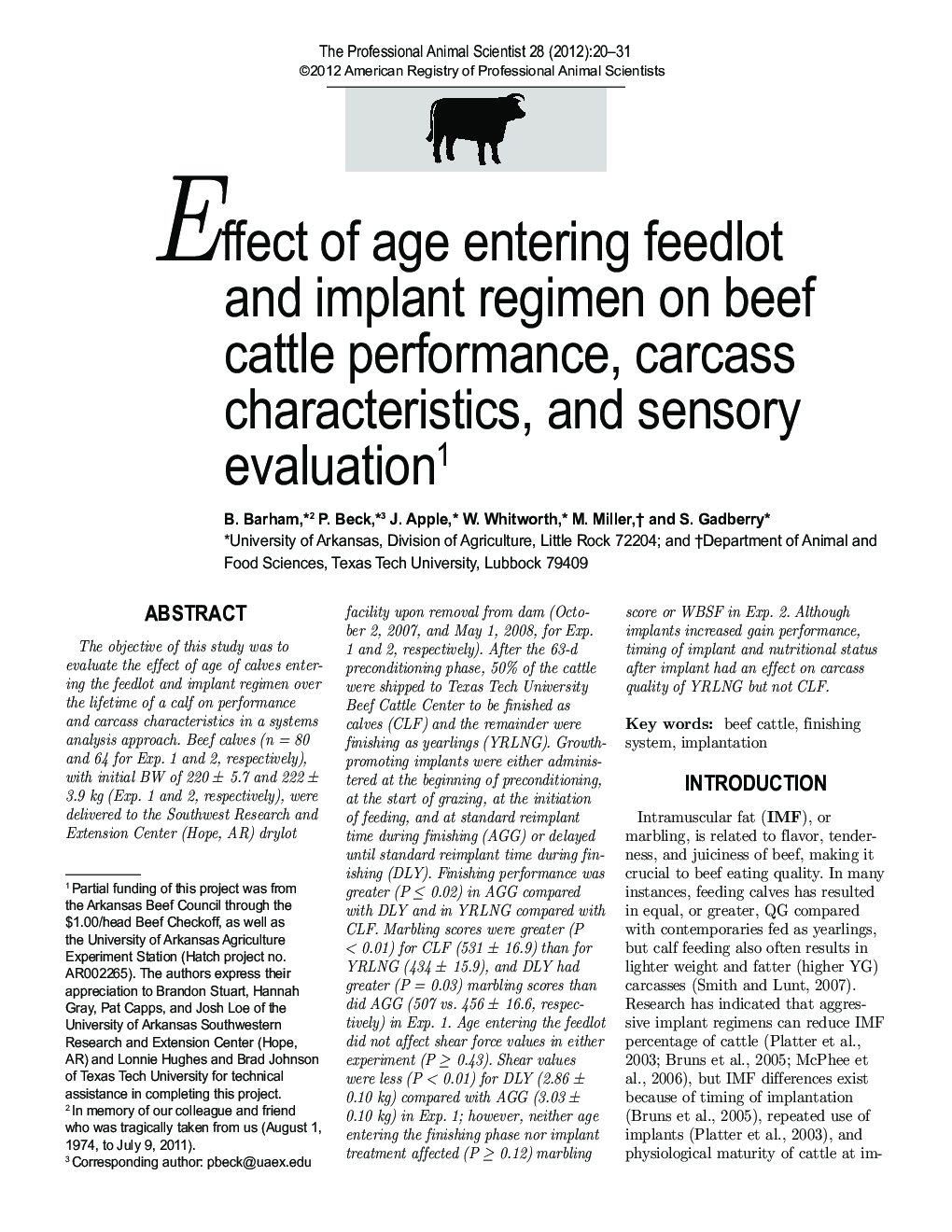| Article ID | Journal | Published Year | Pages | File Type |
|---|---|---|---|---|
| 2453925 | The Professional Animal Scientist | 2012 | 12 Pages |
Abstract
The objective of this study was to evaluate the effect of age of calves entering the feedlot and implant regimen over the lifetime of a calf on performance and carcass characteristics in a systems analysis approach. Beef calves (n = 80 and 64 for Exp. 1 and 2, respectively), with initial BW of 220 ± 5.7 and 222 ± 3.9 kg (Exp. 1 and 2, respectively), were delivered to the Southwest Research and Extension Center (Hope, AR) drylot facility upon removal from dam (October 2, 2007, and May 1, 2008, for Exp. 1 and 2, respectively). After the 63-d preconditioning phase, 50% of the cattle were shipped to Texas Tech University Beef Cattle Center to be finished as calves (CLF) and the remainder were finishing as yearlings (YRLNG). Growth-promoting implants were either administered at the beginning of preconditioning, at the start of grazing, at the initiation of feeding, and at standard reimplant time during finishing (AGG) or delayed until standard reimplant time during finishing (DLY). Finishing performance was greater (P ⤠0.02) in AGG compared with DLY and in YRLNG compared with CLF. Marbling scores were greater (P < 0.01) for CLF (531 ± 16.9) than for YRLNG (434 ± 15.9), and DLY had greater (P = 0.03) marbling scores than did AGG (507 vs. 456 ± 16.6, respectively) in Exp. 1. Age entering the feedlot did not affect shear force values in either experiment (P ⥠0.43). Shear values were less (P < 0.01) for DLY (2.86 ± 0.10 kg) compared with AGG (3.03 ± 0.10 kg) in Exp. 1; however, neither age entering the finishing phase nor implant treatment affected (P ⥠0.12) marbling score or WBSF in Exp. 2. Although implants increased gain performance, timing of implant and nutritional status after implant had an effect on carcass quality of YRLNG but not CLF.
Keywords
Related Topics
Life Sciences
Agricultural and Biological Sciences
Animal Science and Zoology
Authors
B. Barham, P. Beck, J. Apple, W. Whitworth, M. Miller, S. Gadberry,
